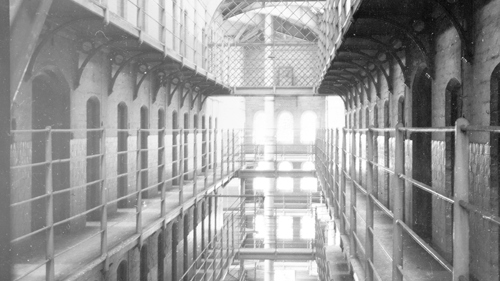Glasgow's Executioners - Times Past

In partnership with the Glasgow Times, our archivists are exploring Glasgow's fascinating history. This week, Michael Gallagher writes about Glasgow's executioners.
Glaswegians of yesteryear have undertaken many unpleasant occupations, but few were as grim as the city’s executioner.
Between 1615 and 1897 there were 132 executions in Glasgow. However, the post of hangman often proved difficult for the city to fill.
This worked out rather well for one John McClelland who, in 1605, was banished from the burgh on suspicion of theft on the understanding that he would be hanged if he returned. John came back to Glasgow a few months later and was duly caught for stealing once more. Fortunately for him, Glasgow was at that time “desolate of ane executor” so, instead of putting him to death, the town council appointed him to the post with the caveat that he would be “hangit to the deid” if he ever relinquished office.
The hangman was evidently not a popular figure; so much so that the council introduced a fine of five pounds for anyone who “abuisis the said John, ather be word or deid”. If a child insulted the executioner, their father would be liable for the fine.
The situation was similar two centuries later. In 1815, Thomas Young entered into an agreement with the council which obliged him “for all the days of his natural life” to serve as Glasgow’s “common executioner”. This involved performing executions, but also “whipping criminals, putting them in the pillory, or in the stocks, or exposing them upon the platform”.
When not carrying out these tasks, Thomas was required to serve the city of Glasgow as a labourer and compelled “to live quietly, soberly and regularly in all respects”. For this he was paid an annual salary of £50, plus one guinea for every execution he carried out and a new pair of shoes twice a year.
The conduct of the hangmen was clearly an issue. In 1889 the Secretary of State for Scotland felt the need to send a list of recommendations to local authorities, “with a view of preventing as far as possible the objectionable circumstances which sometimes attended the carrying out of sentences of death.”
Chief among these was the requirement to “strictly limit the allowances of alcoholic liquor to be made to the executioner.” To make sure this was adhered to in Glasgow, the hangman was kept under supervision in the period before his assignments in premises next to the execution site.
Glasgow’s executions were carried out in various locations. The street name Gallowgate gives an indication as to where the city’s early place of execution was located, and hangings were later carried out around the Cathedral and the Tolbooth. In 1814, the new Jail Square at the foot of the Saltmarket became the main place of execution and played host to 52 public hangings between 1814 and 1865, when the last public execution was staged.
Executions were then held at Duke Street Prison (pictured above) before the gallows moved to Barlinnie in 1928, where the city’s final hanging took place in 1960.
